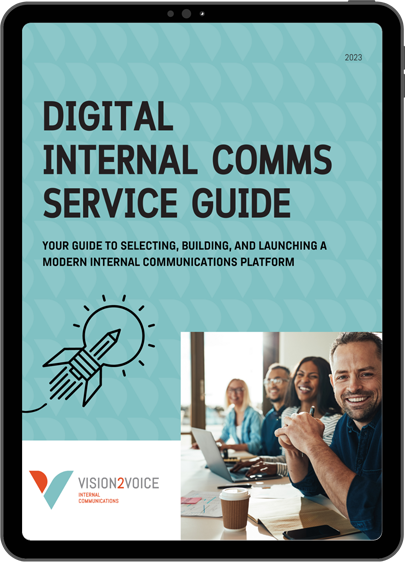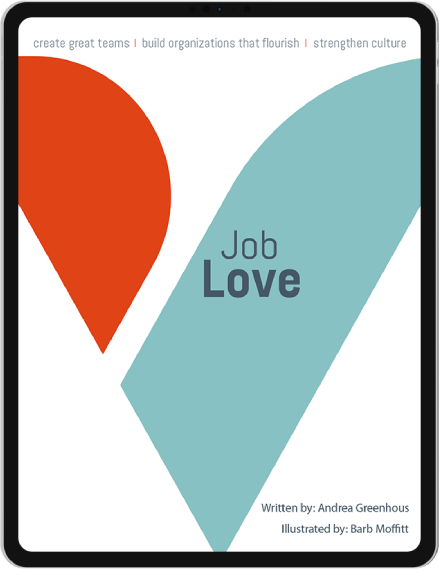
Leaders are worried about their people and the future of their organizations. They are afraid that the culture they worked so hard to build won’t stand up to remote work and a world where everyone has to stay two meters apart. They are concerned about the mental health impacts that the COVID-19 pandemic is having on their people, not to mention the epidemic of loneliness and craving for connection. When it comes to the future of their organizations, leaders are trying desperately to steer a course through the fog and turbulence that is served up by our world today.
There’s one way for leaders and their organizations to tackle all of these issues head-on, and that’s by creating a robust listening strategy. When it comes to creating a plan to ensure business continuity and success in these uncertain times, leaders can no longer make assumptions and hope for the best. Instead, organizations must develop a listening strategy to harness ideas, and to understand what employees are thinking and how they are feeling. Internal communications must worry less about sending out the news and more about supporting meaningful conversation, and open and honest sharing of ideas.
The Power of Listening
If people aren’t heard, they feel invisible. It impacts their self-worth, and it makes them feel isolated and disconnected. Everyone has a voice and their own truth. These truths are complicated and messy, which is why it’s easy for leaders and their organizations to fast forward to creating solutions without listening and understanding first. When organizations bear witness to their employees’ stories — when they stop and listen — people feel validated, strengthened and seen. In this way, listening supports positive mental health outcomes by addressing some of the things that negatively impact mental health at work (lack of control, lack of opportunity for self-expression, unhealthy relationships).
The power of listening goes beyond just making people feel better. In a complex and chaotic world, the most successful organizations are always learning. By listening to employees, they can harness the ideas, insights and knowledge that exists at all levels within their organizations. Again, this isn’t easy. In her research, Amy Edmonson has found that:
“the most apt and adaptable leaders are those who are aware of their limitations, have the necessary humility to grow their own and others’ potential, and are courageous and curious enough to create sincere and open connections with others.”
The bottom line is that organizations that listen are stronger and more resilient. Listening reinforces a culture of trust, respect and psychological safety, and it unlocks the real power of your organization by uncovering great ideas and insight from all of the smart people you hired.
The Elements of a Listening Strategy
There are many ways to listen to your employees, and a deliberate listening strategy should include as many of the following elements as possible (the more, the better):
Start with Psychological Safety
If people are afraid to speak up, the only thing you will hear is crickets or you won’t get the real story. I’ve seen it before — organizations where on the surface everyone is engaged, asking questions, and providing feedback while under the surface people are afraid to speak truth to power, question the status quo, or show weakness. The key to unlocking the truth and getting genuine feedback and input is to build psychological safety. I’m so convinced that internal comms has a role in building psychological safety that I’ve written about this topic in depth.
Be Intentional
Communication should always include a clear invitation to comment, ask questions, or provide feedback. Remember that the words you chose can make a difference between encouraging people to speak up and discouraging candour. An open invitation that demonstrates curiosity and humility is the best way to ask people to participate in the conversation and contribute their ideas and input.
Conduct a Survey
Surveys are a great way to check-in with employees and allow them to provide their input. Unfortunately, there seems to be a nasty urban legend in organizations that employees are tired of filling out surveys. Nothing could be farther from the truth. People are simply frustrated when they are asked to fill out a survey and then hear nothing about the results. Do not conduct a survey without a clear communication strategy that helps employees understand why their opinions matter, what you will be doing with the data you will collect, and how it will inform decisions and actions.
Equip Leaders
Leaders from the C-suite to the front line are all very busy, and today, many are not even working in the same building as the people they manage. This makes it even easier for them to charge ahead blindly. Make managers a key partner in your listening strategy by helping them understand why it is essential to listen. Support them in their efforts to listen by equipping them with questions that promote open discussion in their meeting toolkits. Provide them with training related to listening, empathy and vulnerability to help leaders understand that they don’t have to have all of the answers, and it’s okay to be wrong.
Reimagine Town Halls
Town halls often feature made up questions that are a little too friendly to be real. Instead, experiment with ways to surface the real issues and concerns. Sometimes simply reframing the event as an Ask Me Anything or Leaders Hotseat session can be enough to make a difference. You can also organize a town hall hosted by employees where they set the agenda and leadership listens. Regardless of the format, what’s critical is the mindset of leaders who should heed the advice of Bill Gates (slightly modified by Andrea Greenhous): your most unhappy employees are your best source of learning.
Get Intimate
One tactic I’ve used successfully is to have senior leaders host more intimate conversations with employees in virtual fireside chat type of events. In these informal settings, leaders can set the conditions for employees to feel comfortable sharing their perspectives and encourage difficult questions and new thinking. Then, the CEO can then share how these conversations provide fresh insight, further driving home the message that open and honest communication is valued.
Express Gratitude
Thanking employees for their honest feedback is a small but meaningful act that will reinforce the importance of speaking up. Acknowledging the value of feedback is an act of courage and humility and can build trust. A leader who shares stories about how insight helped change his/her thinking is a great way to reinforce the value of candour.
Listen with Compassion
Many leaders are appointing themselves Chief Empathy Officer. This role starts and ends with listening and requires setting aside ego and judgement. For this reason, the goal of your organization’s listening strategy should be to make it safe for people to express their emotions; and to understand and acknowledge how people are feeling.
Let’s Hope Massive Disruption Turns to Enlightenment
COVID-19 has caused massive disruption to the workplace, and employers have had to make a significant shift in how they communicate with employees. Smart organizations are not moving forward blindly — instead, they are listening first. That’s why our Better than Before program kicks off with a listening strategy that includes a current state assessment of your culture and equips leaders with powerful knowledge and understanding.
Important Footnote: I’ve been working with a client on a plan to return to the office in several months. I am working with them to make sure people feel safe and follow the guidelines in place. As part of our work, I suggested a short survey to find out how employees are feeling about a return to the office. What was really amazing is that many people included comments thanking their employer for sending out the survey. People said it really showed that management cared about them.






